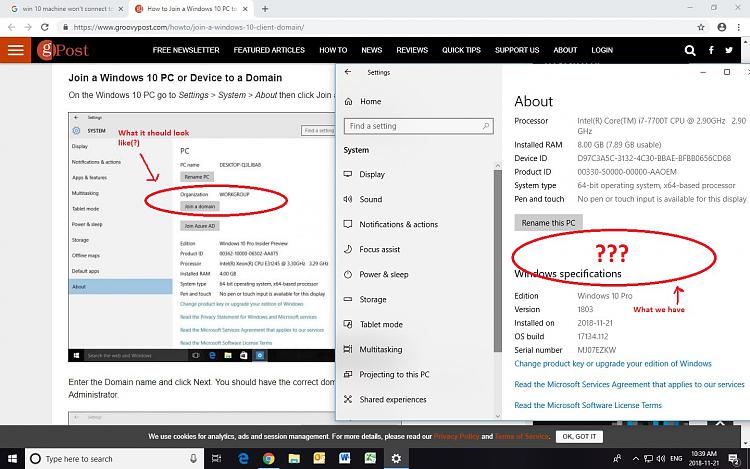



When done, re-connect the machine to the network, then join the machine to the domain: This step is important to avoid ending up with your C:\User\ folder being called YourName.DomainName instead of just YourName. On this screen create an account name such as “Admin” – something OTHER THAN the name that you intend to log into this computer with later when joined to the domain. When that step is complete, click the Back arrow at the top left of the screen to return to the previous screen, then click the “Next” button again to be presented with the old “Local Account” creation tool: Then change the Networking Adapter Virtual Switch to “Not connected”. Or if using a Windows Hyper V server, open Settings… If testing in a virtual machine, enter the settings of the VM< and either change the network adapter to “Host Only” such as in VMWare workstation So here’s the work around I’ve come up with.Īt this point in the installation, disconnect from the Internet by either unplugging a physical netwok cable, entering airplane mode if you have the switch on your computer to do so, or otherwise just break your connection to the Internet.

There’s no obvious way to “not” sign into the Microsoft account and instead join the domain. If you sign in immediately and then join the domain later, you’ll end up with two different profiles, both loaded with Microsoft Profile stuff, which is NOT A GOOD THING. After installing the Windows 10 Enterprise beta the first thing you’ll notice is that Microsoft tries to make you sign into a Microsoft account immediately instead of giving you the option to first join your domain.


 0 kommentar(er)
0 kommentar(er)
